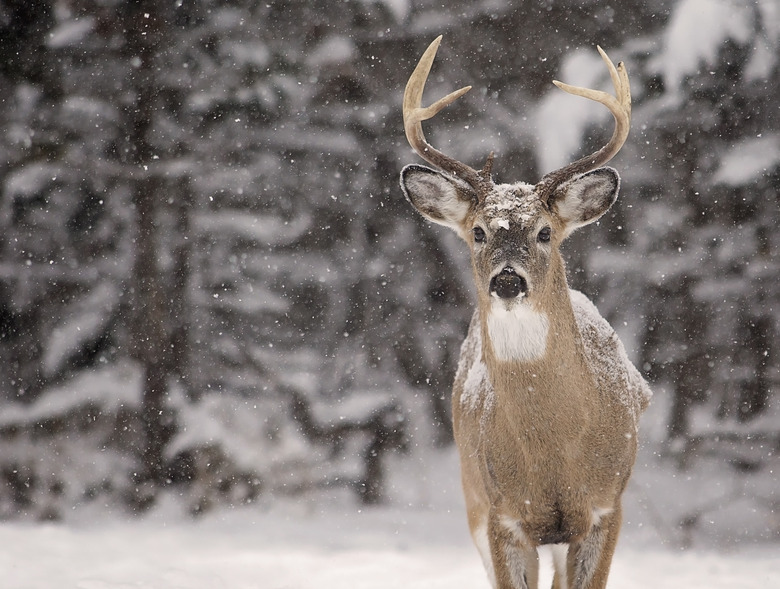What To Feed Wild Deer
The types of food a deer can eat would populate a long list. Scientists have documented around 400 different types of plants in the stomachs of dead members of this species. However, deer should only eat specific types of vegetation. Because of this, humans should avoid feeding wild deer. Many governments whose populations neighbor deer habitats advise against feeding wild deer, and some of them fine the people they see doing it. Feeding these wild ungulates can also pose a threat to humans. Some wild animals react aggressively to humans or carry parasites. Feeding prey species teaches them to come to a specific area, which can draw predator species that are threats to humans.
TL;DR (Too Long; Didn't Read)
Wild deer most often eat leaves, berries, lichen and acorns. While feeding wild deer healthy food is possible, most environmental departments in areas with deer species recommend not doing so, and some prohibit it entirely.
Deer Habitat and Biology
Deer Habitat and Biology
Deer most often live in forested areas for easy access to their natural foods, but they can live in other ecosystems such as grasslands. Deer eat a wide variety of plant matter, though during most of the year they forage for berries, acorns, mushrooms, lichen and leaves from woody trees and herbaceous plants. During the winter, they also eat the buds and pine cones of evergreen trees. In some cases, they end up eating leaves from plant species that humans use in agriculture.
How much food a deer needs depends on species, age, sex and season. During the food-scarce winters, an average deer needs 5 pounds of vegetation per day, roughly half of what they need in the summer. Deer require high amounts of protein, phosphorous, chemical energy, fiber and calcium. Diets low in these key nutrients dramatically affect an individual animal's growth. Captive deer fed poor-quality diets only grow single-spiked antlers after 2.5 years, while those fed high-quality diets grow antlers with six spikes.
Why Not to Feed Deer
Why Not to Feed Deer
Deer species have evolved to have specific microbes in their stomachs during the winter, which aid them in digestion. As such, deer cannot adequately digest some food during these months. Deer digestive systems change slowly with the seasons, and feeding them out-of-season food can, in extreme cases, cause death, though digestive problems are more common. Deer who gather at artificial food sources see higher risks of certain diseases and parasites. A person who feeds deer an adequate diet can create potential problems for the area's ecosystem. The deer population is somewhat moderated by limited food sources. Removing this limitation increases the deer population, which can reduce the availability of the plant species they eat.
Cite This Article
MLA
Johnson, Doug. "What To Feed Wild Deer" sciencing.com, https://www.sciencing.com/feed-wild-deer-5495043/. 30 April 2018.
APA
Johnson, Doug. (2018, April 30). What To Feed Wild Deer. sciencing.com. Retrieved from https://www.sciencing.com/feed-wild-deer-5495043/
Chicago
Johnson, Doug. What To Feed Wild Deer last modified March 24, 2022. https://www.sciencing.com/feed-wild-deer-5495043/
